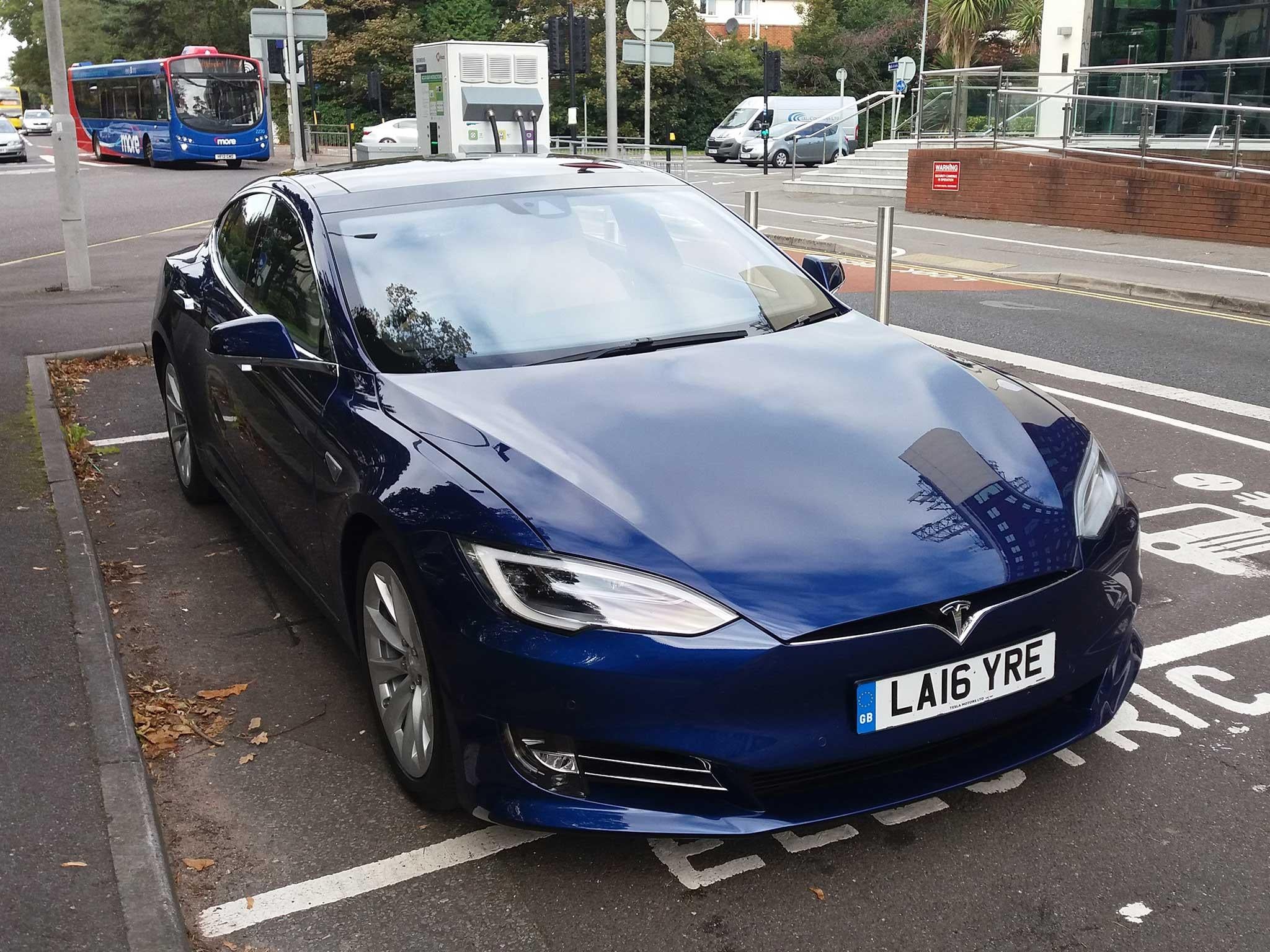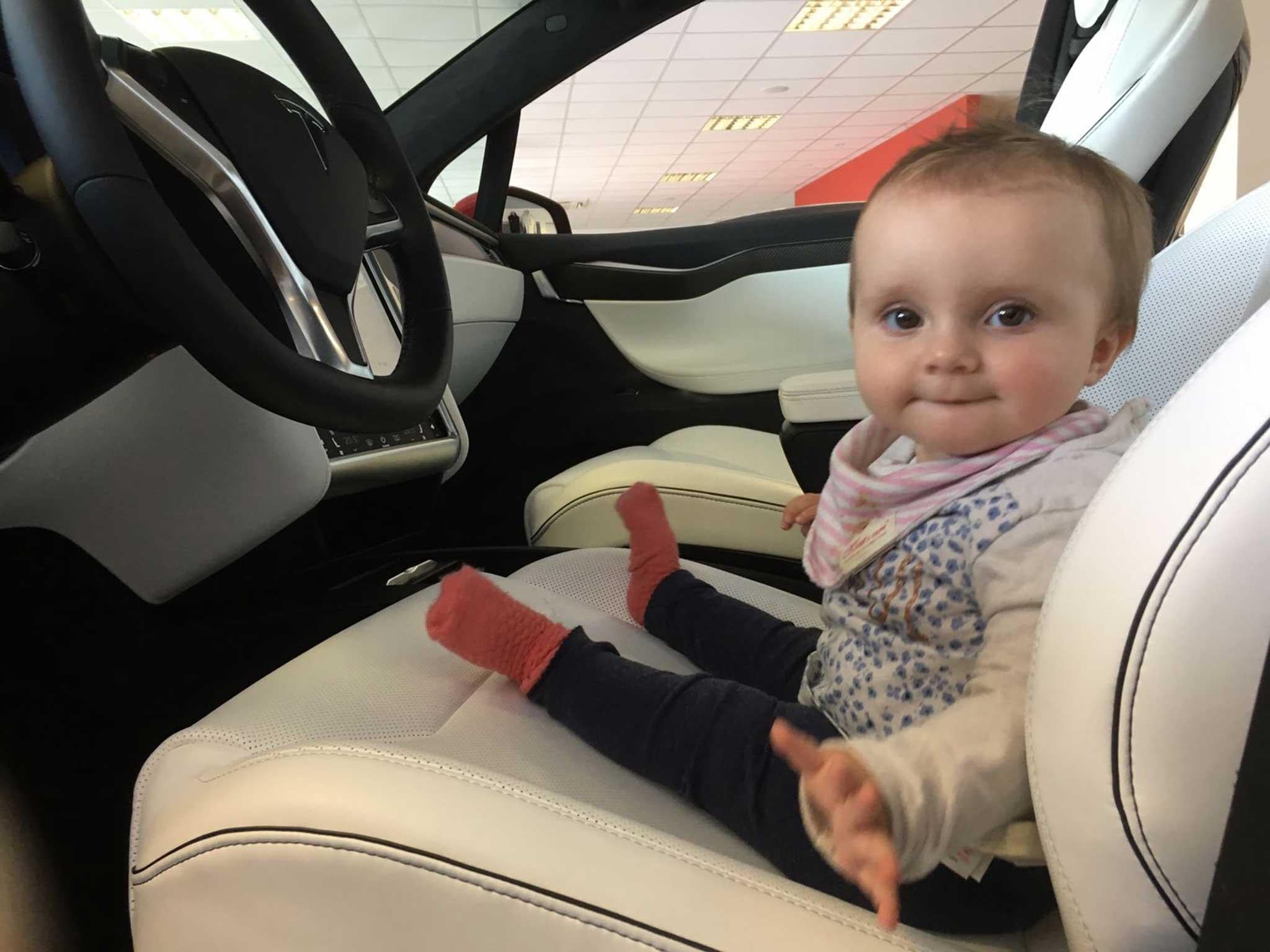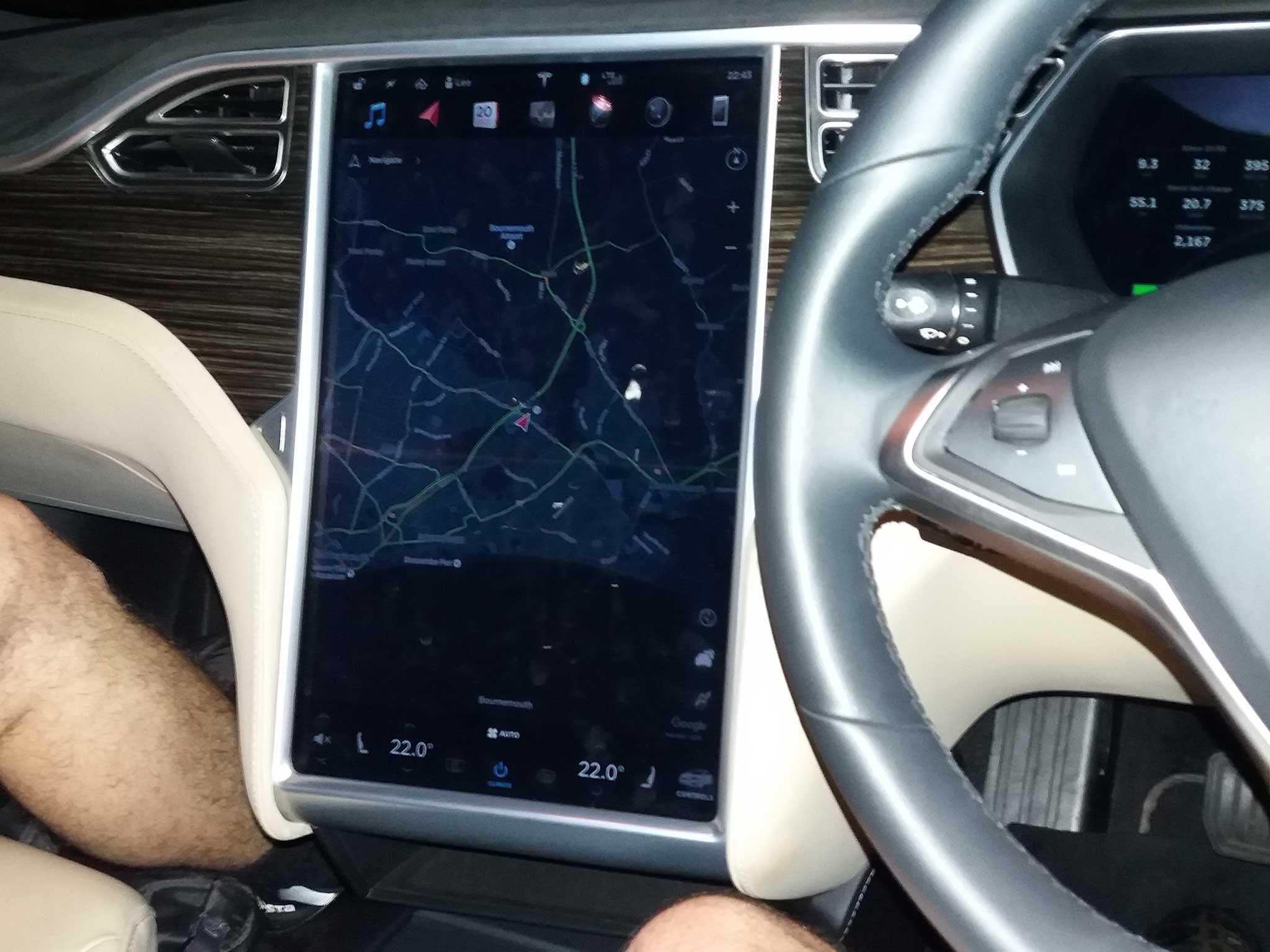I tested out a Tesla Model S for a week and it was a little bit frightening
A beautiful car that symbolises humanity’s march towards automation, but how does it fare on your average week in Poole?

Last week Tesla announced all its new cars would come with full driverless capability. So I felt slightly paranoid that on the same week I – a human – was being given a Tesla to test drive. Had I been specially selected from a shortlist of idiots to prove how much better transport would be without drivers?
Temporarily shelving these disturbing thoughts, I headed to the Tesla centre at Heathrow to pick up my new Model S, Tesla’s fully electric luxury saloon. My hands felt sweaty on the steering wheel of my tiny Hyundai at the prospect.
Sweaty hands turned to sweaty other parts as I walked towards the sleek beast waiting for me outside the minimalist-chic Tesla showroom. From the moment you first approach a Model S, and the door handles automatically pop out to meet you, you know you’re in for something special. Once inside the first impression is confirmed, amidst all the leather trim and mahogany that you might expect is a giant tablet-style touchscreen computer the size of a small coffee table or large family Bible. Everything in the car is controlled from this screen, from the seat adjustments (personalised in your own driver profile) to the navigation system and all the usual dashboard controls. While the Tesla woman overloaded me with information about what the car could do (did she really just say it can withstand chemical and biological attacks?) my mind was endlessly repeating the simple formula “let me play”.
Fortunately it wasn’t long before I could. A quick lesson on how to use the autopilot and I was free to take the car on the hour-and-a-half trip back to my hometown, Poole. Cruising down the M3 in my newly-acquired Model S I began to feel like a rock star. A rock star with a conscience. I basically felt like Bono.

Once I’d managed to get over this, I was able to relax and try out some of the features like autopilot and auto-steer. To engage autopilot you pull a paddle on the steering wheel towards you twice and suddenly the car is in control, the wheel turning itself to follow the curve of the road and keeping itself a set (but adjustable) distance from the vehicle in front. To change lanes automatically you simply flick the indicator in the desired direction and the car moves itself, once clear, into the correct lane. I’m sure both these features make long journeys ultimately more comfortable but at first they are bum-squeekingly unnerving, especially the auto-lane change. I also found that it is unable to cope with twats who roar up behind you, tailgate you aggressively then try to undertake you just as you’re telling the auto-steer to pull back in. As the twat roared off, I reappraised the benefits of fully driverless cars.

The next day was back to real life and its humdrum concerns, a good chance to test out the practical aspects of the car. It was a day of pootling about town. This was fun in a shiny new car with tonnes of gadgets, but I’m not sure how long that would last. You see the Model S isn’t really a pootler. It’s just too damn big. Another issue, at first, was the automatic locking. Supposedly you just walk away and the car locks itself. Yet never has a single feature induced such instant OCD, especially as you have to walk quite a distance before it locks and the only way of telling is the door handles sinking back into the bodywork – quite hard to spot from a distance. For several minutes I dilly-dallied, peering over my shoulder, dithering like some overprotective ostrich leaving its eggs for the first time. Fortunately Tesla has placed enough faith in humanity to allow you to lock the car manually by double clicking the car-shaped key fob.
One of my pootly chores of the day was charging the car itself. Teslas usually come equipped with home chargers, enabling you to power them overnight thus overcoming so-called “range anxiety”. Having it only for the week I was not afforded this luxury and had to use public charging points. I headed off to my nearest one – handily pointed out on the car’s Google Map-based navigation system. It took the best part of two hours – and a cost of £12 – to charge from half to full battery, time which I spent happily playing with the various functions on the computer. But it’s easy to see how this would quickly become tedious.
Tesla has its own superchargers dotted around the country which take nearer half an hour to fully charge but the nearest to me was an hour’s drive away, so not much use. This was a shame because, in a way, it’s these superchargers that give Tesla the real leap over any of its rivals. With two-hour plus charging and significantly lower ranges, long-distance trips in other EVs dial the clock back to pre-combustion engine times. When friends of mine asked a dealer of another popular EV how long it would take to get to Scotland, they were told they’d be lent a petrol car instead. A nice gesture but one that begs the question, what’s the point in buying an electric car in the first place? The Tesla Model S has a range of more than 250 miles plus the benefit of its supercharger network. A similar trip from Poole to Edinburgh in the Tesla would take ten hours with three 20-to-40-minute charging stops between. Not the fastest trip ever but certainly manageable and with no more or lengthier stops than you would probably take in a petrol car. And the route is handily mapped out for you by the Tesla’s navigation system, providing waypoints at each Tesla supercharger, estimates of charge left on arrival at each waypoint and charging time required.
Car fully charged and mind at ease, I ceased my pootling and went home to rest up for the next day’s Tesla challenge – daddy day care with my eight-month-old daughter. With children the Tesla really comes into its own. There’s space on the backseat for three child seats. And despite being a saloon, the boot is so spacious I could literally fit her buggy inside without folding it. The boot can also be modified, on purchase, to provide two extra child seats, turning the standard saloon into a seven-seater. There’s also extra storage space under the bonnet next to the engine, which I put the shopping in. Not because I had to but because I could. The auto-locking suddenly makes sense with a child in tow too – no more scrabbling about for your keys while trying to hold a flailing toddler.

On the way back from the supermarket I tried out some of the other features. Auto-parking is something that few car manufacturers have managed to get right, but the Tesla does it perfectly. You just find a spot, put it in reverse, take your hands off the wheel, press auto-park and the car does the rest to millimetre perfection. It’s a handy feature because the sheer size of the car does make reverse parking daunting. But I did have a problem with it – although the auto-park itself is perfect, the system for finding parking spaces is less so. In its mania for all things automated, Tesla has equipped the car to detect parking spots for you. The only problem is, this function didn’t work a lot of the time, completely missing parking spots that were ample enough for several cars. And without the car sensing a spot, you can’t use auto-park, which is annoying.
Undeterred I pressed on, trying out bio-weapon defence mode (yes the woman really had said the car can withstand biological and chemical attacks). Basically it seals the cabin from outside contaminants (99.97 per cent of all exhaust pollution and all allergens according to Tesla). In practice it’s pretty unimpressive, just blasting you with a load of air, but it must be a godsend for people who suffer with hay-fever. It does make you wonder though if Tesla CEO, Elon Musk, is cooking up some apocalyptic plot to repopulate the world with middle class, vegan, tech geeks.
Also – minor gripe time – why does a car that can withstand a biological or chemical apocalypse not have a rear windscreen wiper? Yes I know it has a rear-facing camera that pops up helpfully on the touch screen whenever you reverse. But perhaps, just perhaps, I might want to look out the back window myself sometimes when it’s raining. And no CD player? Yes it has a built-in Spotify app but what if I don’t want to spend hours creating playlists of my favourite tracks? What if I want to spend just seconds putting in the CDs I already bloody have?
But in the grand scheme these are very minor issues. The truth is I fell in love with the Model S. It’s almost literally an unbelievable car, a game changer in every sense. If I won the lottery a Tesla Model S is the only car I’d buy. Unfortunately that’s one of the problems – at prices from £57,900 to more than £100,000 most people would have to win the lottery to afford one. The one I tested cost £95,180, but luckily for those of us stricken with the Tesla bug, the company is building up to the release of an affordable version. The Tesla Model 3 is set to launch next year at a price of around $30,000 (£25,000) and will include full driverless options.
I probably won’t be able to afford one of those either but it’ll be good to know more people will have access to such amazing technology. And, of course, that more people will survive the imminent bio-chemical apocalypse. Those pioneering geeks will live on to tell tales of the savages who drove machines fuelled by dead plants, who had to look over their shoulders to reverse and who didn’t have access to Spotify from their cars… good luck to them.
Join our commenting forum
Join thought-provoking conversations, follow other Independent readers and see their replies
Comments